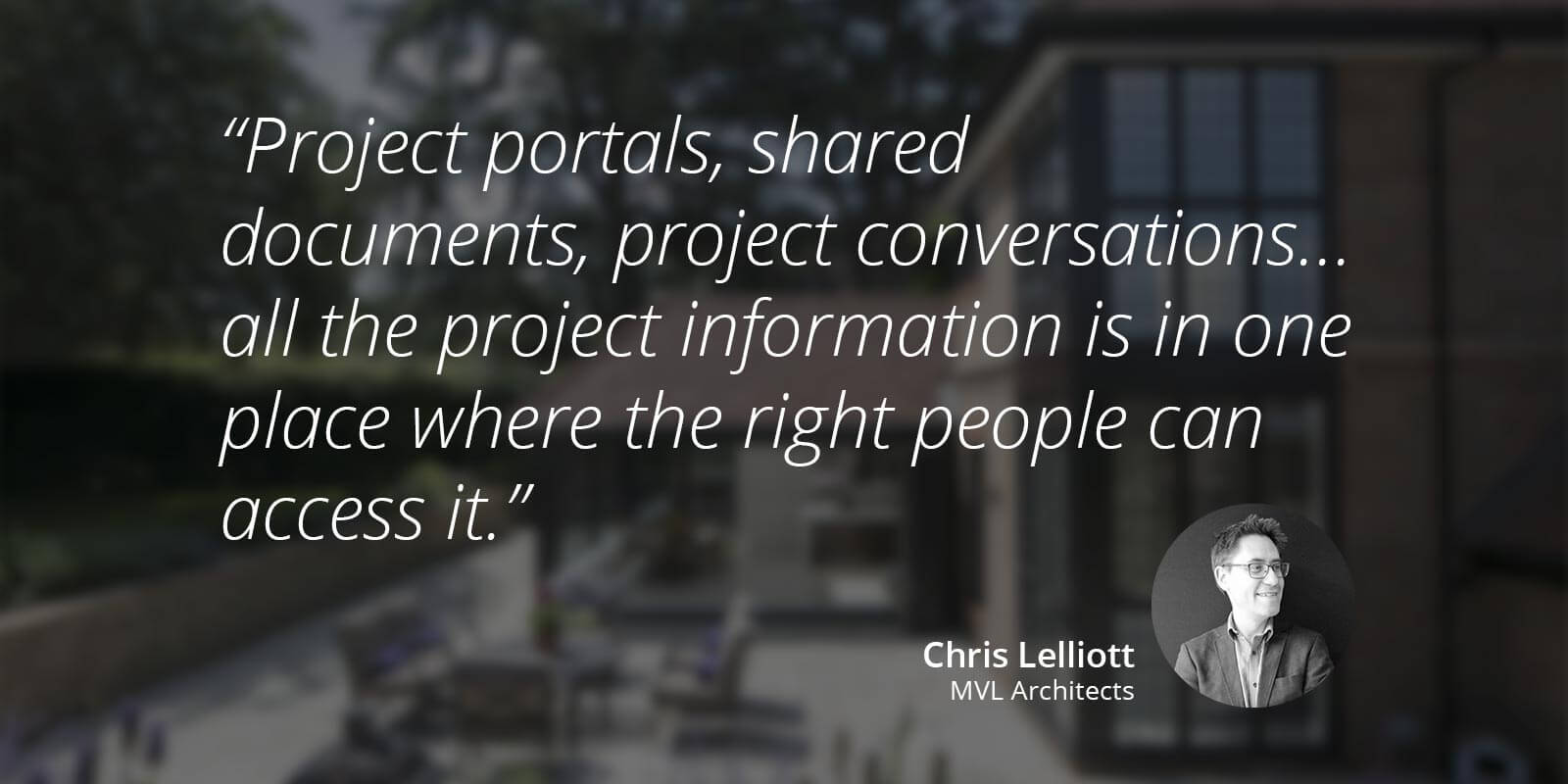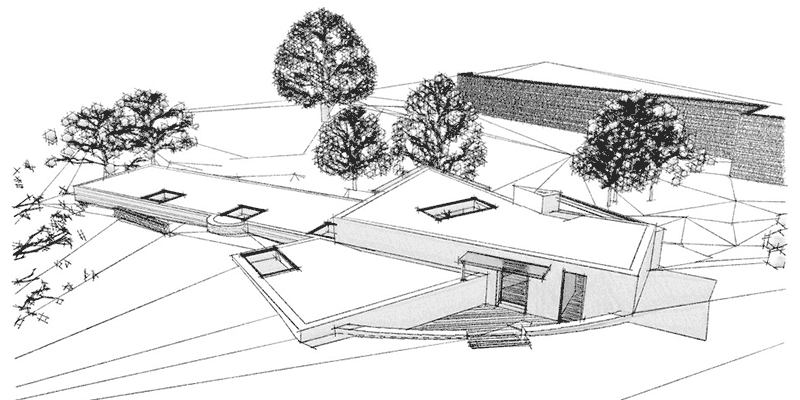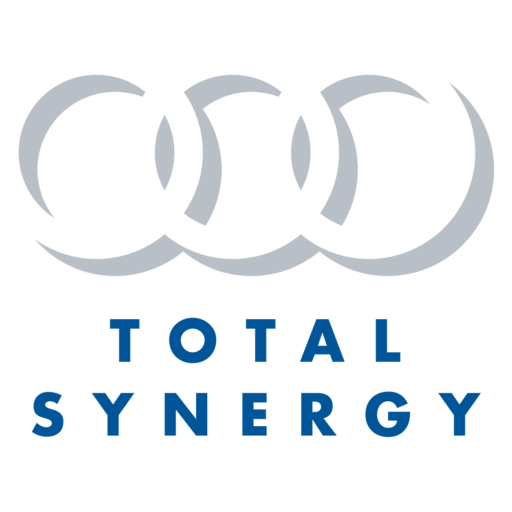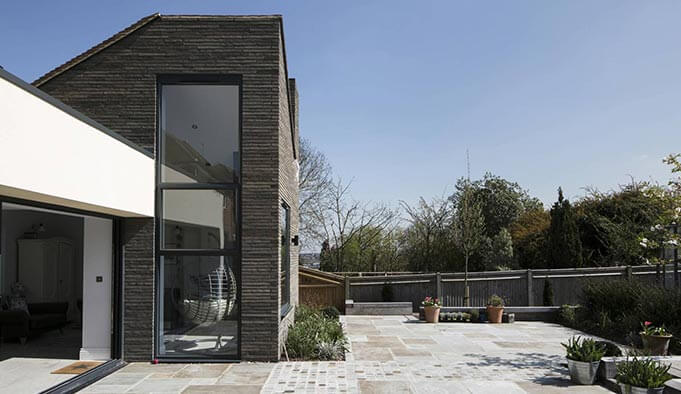Architects of best practice — MVL Architects and Surveyors
What do you get when you cross a geek with an architect? Chris Lelliott. (Long version: someone who understands what’s involved in assessing software and digital tools for real business and customer value.) [Ed: Geek is a term of endearment to a software company like us — high praise!]
Chris Lelliott is a director of MVL Architects and Surveyors, a multidisciplinary design and surveying Chartered practice of eight people with offices in Surrey, Hampshire and Cardiff. The practice has a long, successful history with domestic residential projects now expanding and diversifying its commercial portfolio.

Chris’s role in the practice covers design, project management, practice management and, in particular, how technology is used in the business for strategic advantage. As MVL starts to move into commercial work, he said it was important to get the right resources in place.
“We’re starting to get the right pieces in place and part of that is practice management software,” he said.
“Up until now, we’ve not really had a proper practice management software. We have been working with old fashioned spreadsheets to sort out what has been going on in the practice, who is doing what, and we have many meetings to keep track of what is happening.”
This is something we hear more often than not — spreadsheets are the mainstay business ‘system’ patching architecture, engineering and construction design practices together. While most design businesses understand the value of technology in other areas — design software, for example — the software that helps analyse the health and profitability of the business is left to Microsoft Excel or Google Sheets.
Technology mindset
Chris Lelliott said that MVL has always used technology to aid its processes.
“As soon as I joined the practice in 2002, we immediately moved over from CAD to BIM,” he said.
“We’ve been working in BIM with Archicad ever since. We’re already of the mindset of communicating with one another on model based projects inside BIM, and how we can share information.
“What we were missing was how we could manage with the day-to-day running of projects, talking to clients, invoicing, and keeping track of everything like expenses, timesheets, and so on.
“We have been using another program to deal with timesheets for about three years, but that’s all it does — collect timesheets. We still had to take that basic information and analyse it separately.”
Integrated systems
The goal for MVL is to move from a scenario where they use spreadsheets and siloed systems to run the business, to where key businesses software applications — like practice management and accounting applications — can talk to each other and create similar efficiencies to those seen in BIM model projects.
“With the commercial side of things, there are a lot more stakeholders in each project, at which point the communication becomes much more important,” Chris said.
“Being able to localise that into one place is going to be extremely important. It is something we’ve found with just our standard domestic residential work as well — it’s still a headache to try and collate everything together and make sure everyone knows what’s going on.
“There are often two or three people working on the same project at the same time, and they still need to be able to talk to one another separately with regards to time, costs, and expenses on the project as well. Our BIM software doesn’t deal with time, cost and expenses.
“The other side of it is that we were moving our accounting over to Xero,” he said.
“After doing lots of analysis on different accounting software, and because I knew that Synergy was also going to link to Xero, it was another easy answer to say ‘well great, these two programs are going to talk to one another and we’re not going to have to have this hassle of double entering and bookkeeping between two separate systems’. That was really important.”
Challenges driving change
We asked Chris about the challenges the practice faces. One of the biggest, he said, after landing a new project, is communicating with the client — keeping them involved and up-to-date on exactly what’s happening at various stages of the project.
“It’s not just us involved in the project,” he said.
“It’s structural engineers, mechanical and electrical consultants, and everybody else… we have to communicate with a broad set of people and businesses to remain accountable for the project and to keep the client informed.
“Trying to control that is a management problem. Now that we’ve got project portals and shared documents, we can hold project conversations, share documents and drawings, and all the project information is in one place where the right people can access it.”
Changing with technology
MVL has used technology to build on their ethos of sustainable design, enabling the delivery of zero energy buildings and adding value where sustainability is increasingly built into the psyche of clients. They have built a decentralised practice that can deliver this value across the country, sharing resources and accessing what they need wherever they are.
“Technology has enabled our practice to constantly evolve — it helps us communicate and collaborate, and it increasingly gives us the tools to inspire our ethos of sustainable design.
“We have additional offices in Cardiff and Hampshire, so all of our phone systems moved over to VOIP (voice over internet protocol) rather than standard telephone systems because, once again, it’s completely interconnected. Skype is invaluable to us because we are constantly chatting to one another, or sharing screens and talking as though we are sitting in the same office.
“I’m very excited for when I can put a [Microsoft] Hololens headset on and actually wander around the buildings with my colleagues in Cardiff all at the same time. I’m sure that will be on the horizon very soon.
“Synergy and Xero is the next part that was missing for us to deal with in terms running the practice. The fact that these applications are cloud based works from my point of view because sometimes I am in the Hampshire office, sometimes in the Surrey office, sometimes in Cardiff, and just being able to grab hold of it whenever I need to, rather than having to log in to our server, I can do it there and then.”
The technology decision
Chris Lelliott suspects most small architecture practices are still using spreadsheets and emails to run projects. Often this is because it can be easier to continue with something familiar than to try to do something different that requires an investment of time.
“The point is that if it takes you 10 times as long to do something, even though that is familiar to you, is it not worth spending a week or two working out how you can do something much better to save yourself all that time? That’s the process we have been going through — it takes time to figure the new systems out, but it’s going to pay dividends.

“That’s not to say you should choose technology for technology’s sake,” Chris said.
“We’ve been through several trials where we’ve looked at the software and thought it just doesn’t work for us. For example, we tried some other workflow maximizing software that claimed it was for architects. It also linked with Xero, but it didn’t suit how we work in terms of multiple fee types on a single job. We sometimes work on percentage contracts, sometimes on lump sums, hourly rates, or combinations within one project. It just couldn’t cope with it at all. We tried different workarounds to get it to work but decided it just wasn’t for us.
“Some trials are less involved than others, and some take a considerable amount of time to actually work out whether they’re suitable or not. With Synergy, there’s a lot of information you have to put in, but it’s evident that taking the time to get that right means you’ll get the best information out the other end.”
Industry challenges
We asked Chris for his opinion on what he sees as the current challenges for the architectural and built environment design industry. He thinks the key challenge for now is in communication and how the many parties around a project can work together better.
“Design has always been a collaborative process,” he said.
“There are just so many sub-consultants and multiple clients on large-size projects that all need to be able to communicate with one another. Bouncing emails backwards and forwards just becomes ludicrous. Having that core place where you can actually share all that project information —and that is basically what BIM does — is vital.
“We use Dropbox and things like that because they are good for sharing large files — it would be good if that app was integrated into Synergy and we could upload them into the portal.” [Ed: a future integration on the roadmap].
“How we communicate from office to office is also very important because I don’t see Cardiff and Hampshire as satellite offices — they are offices in their own right. We are MVL as a whole and we all work together on exactly the same projects. Because of that, we need to talk to one another constantly as though we are sitting next to one another, and that’s very much how I try to get the practice to work, that we do know what’s going on all the time.”



